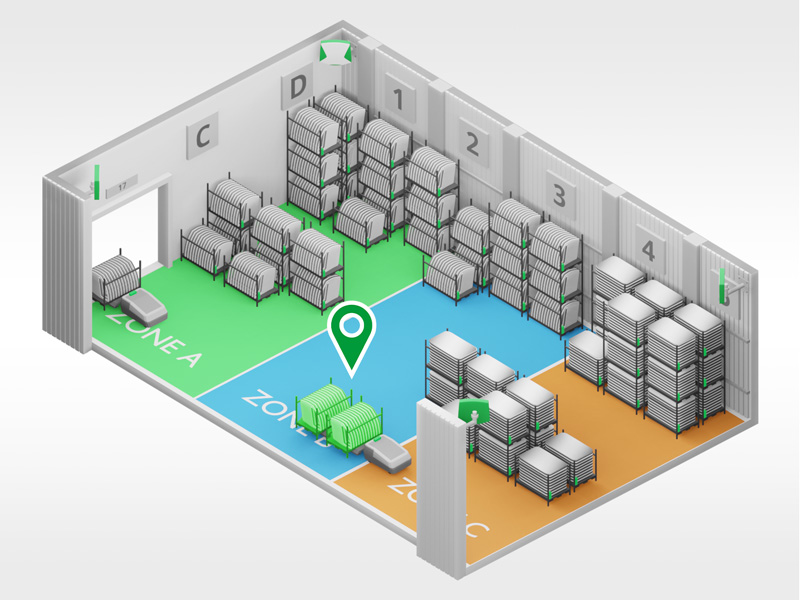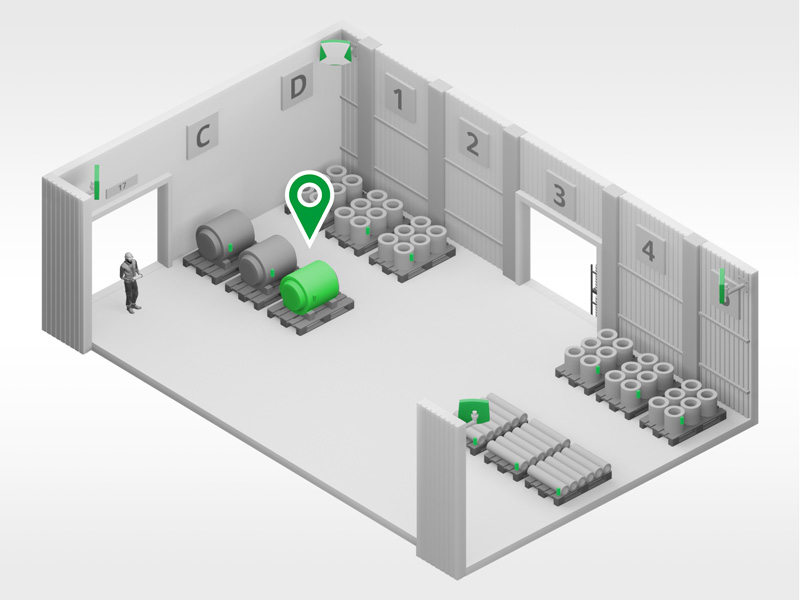What is Indoor Location Tracking?
Indoor location tracking uses advanced technology to monitor how people and objects move around a building. Indoor positioning system displays this information on a digital map, making it easy to track items or people in real time. This is especially useful in large, complex spaces like warehouses, factories, showrooms, and hospitals.
The Benefits of Indoor Location Tracking
Indoor tracking systems help us effectively plan operations, distribute resources, and avoid errors in complex processes.
Wondering how knowing the position of an item or person can make such a difference?
Here’s how:
- Efficient space planning: Tracking data shows how spaces are used. In a warehouse, it can highlight underused areas, so you can optimize layouts.
- Resource distribution: Indoor tracking systems reveal bottlenecks or component shortages across workstations, helping managers to respond quickly.
- Avoiding errors: On the car assembly line, the tracking system recognizes the car model, so the operator’s tools are automatically adjusted.
The tracking system sends location data to software, such as Digital Twin, which analyzes it for further insights. Based on our experience, customers often begin with a single use case that delivers ROI, then add additional applications that further improve their operations.
Indoor Positioning System Applications
Indoor Navigation
This real-time solution, tailored specifically for indoor environments, helps direct both people and vehicles within a building to their destinations efficiently and safely.
Imagine how much easier a forklift driver’s job can be with an app that shows exactly where a pallet is located and where it needs to be delivered. The indoor navigation system then guides them along the safest route.
Geofencing
Location tracking solutions can create virtual zones or “fences” that detect when a person or object enters or leaves. The movement can trigger automatic alerts or actions.
Geofencing helps keep workers safe by alerting them about hazardous areas and improves workflow by notifying them when materials or tools reach the right place.
How Does an Indoor Positioning System Work?
An indoor positioning system, sometimes called indoor GPS uses a network of electronic devices and connected software to analyze position data. These systems employ technologies like RFID, Bluetooth, Wi-Fi, and ultra-wideband (UWB), each with its strengths depending on the application. You can find the comparison of RTLS technologies here.
UWB technology is the most reliable and accurate. That’s why it’s perfect for real-time location tracking in manufacturing where mistakes can be very costly. It uses small UWB tags attached to objects or worn by people to send signals to sensors—anchors around a building, allowing the indoor locating system to detect movement and provide detailed, real-time data.
Real-life Case Studies of Indoor Tracking
Ready to Try Indoor Location Tracking?
| “ | Sewio provides world-class Ultra-Wideband (UWB) hardware that enables C5MI’s clients to run the most accurate and effective RTLS system possible. Sewio is a trusted technology partner of C5MI, their products have become a critical component of our Illuminate RTLS solution offerings. The accuracy, reliability, and scalability of Sewio systems are unparalleled, and our belief in their products translates to incredible value for our clients.” Matthew Stemmler
|





